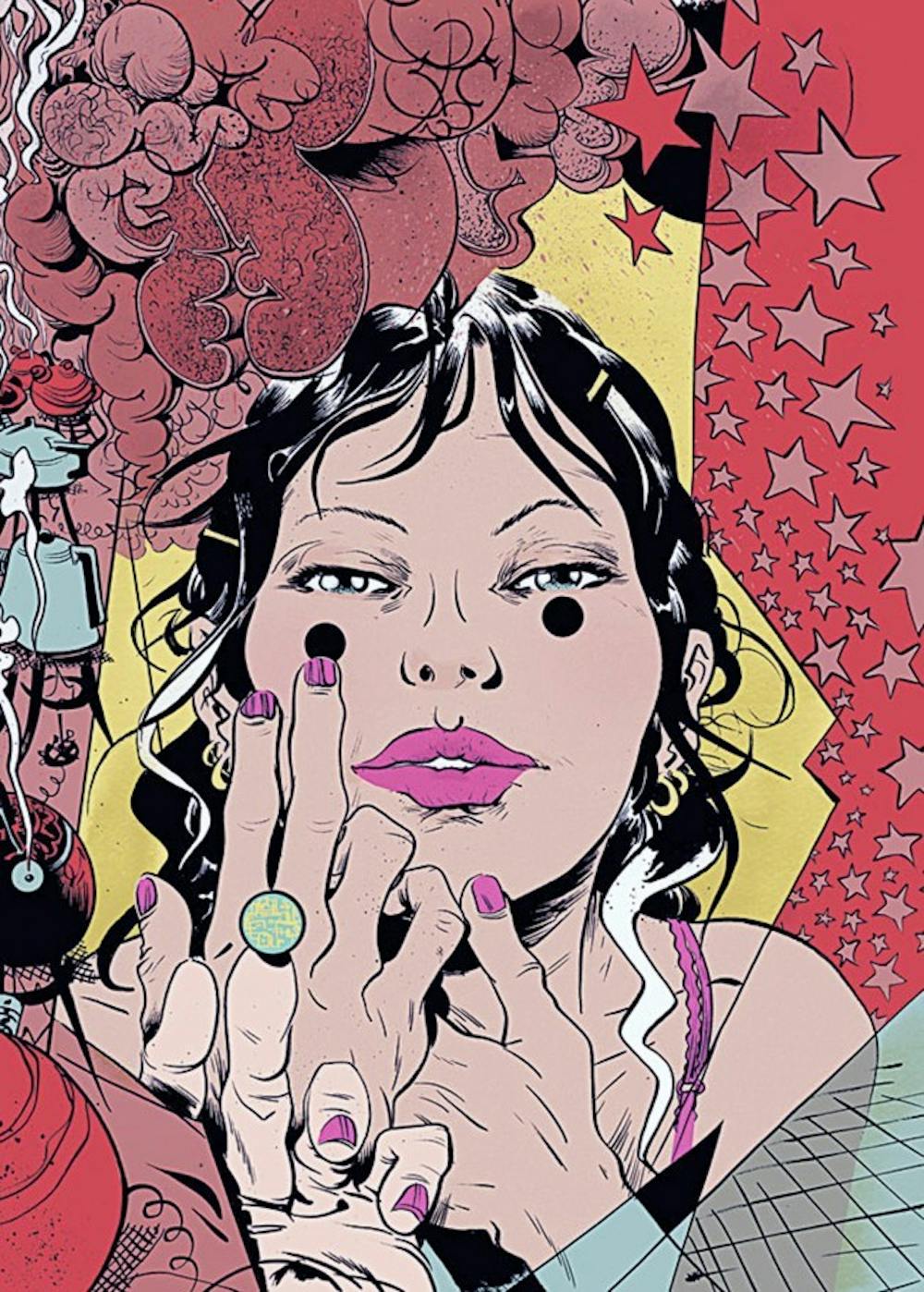Grade: A-
Great science fiction is not about the laser swords, epic space battles, or giant blue cat people. It's about the characters. It's about using these fantastic elements as backdrops and finding what makes these characters tick.
In that respect writer/artist Paul Pope's graphic novel, 100%, succeeds brilliantly.
There are no spaceships, aliens, robots to be found in Pope's book. Instead, the book takes its lens off of the amazing aspects and zeroes in on the simpler factors. He draws the reader away from flying cars and holograms and puts the attention on the people, their love lives, creativity, fears, and anxieties.
100% takes place in the not-to-distant future of 2038 Manhattan. The city has seen better days. A gritty, snow-covered, Blade Runner-like slum has replaced the once beautiful city. The setting along with Pope's excellent black and white artwork seems like an ideal fit for a noir type of story. Although, the story starts off with a murder and the mystery surrounding it, Pope defies conventions and uses it to build his characters instead of wrapping them up in an investigation.
Springing from the murder, Pope sets the stage at an out-of-this world dance club where he weaves the lives of six individuals together. The book covers the experiences of three different couples: the aimless busboy John and the loner dancer Daisy, the fearful Kim and the struggling artist Elroy, and the past-his-prime boxer Haitous and his estranged wife Strel.
A great characteristic of Pope's writing is even though the three different stories cover the same themes each one is radically different, giving the book a distinctive tone. Instead, of opting to lazily tell three different stories, Pope seamlessly intertwines all the stories into one strong story.
What makes 100% such a great read is Pope's strong character development. Each one of the characters, from the lowest busboy to the world-class fighter, are fully fleshed out. Pope injects them with their own individual traits and each have their own distinctive voice. None of the characters or their relationship feels forced.
The best of these stories is the uneasy relationship between club owner Strel and her husband Haitous. Haitous, whose face resemblances Frankstein's monster, is over-the-hill and should have quit fighting a long time ago. This, of course, has caused Strel problems, ending with them separating. Months later Haitous is back with one more fight left in him and trying to reconnect with Strel.
Although it may have the least amount of pages, Haitous's story of redemption is no doubt the strongest story of the three. It covers the themes and nuances of the others but Pope nicely has his story rooted into the others.
Another great touch to Pope's story is how he fleshes out his back-story and creates his vision of the future. Instead of outright explaining the future, Pope adds small details and nuances to the story to create the past. Finer points like mentions of war and Che Guevara covered money cleverly build the complex back-story.
With the large amount of photorealistic artists in the comic world, Pope's artwork stands out from the others. Combined with his eccentric image of the future, Pope's signature art creates mind-blowing visuals. His exaggerated style is a perfect match for the tone and setting of the story.
Pope's art creates a dreamlike atmosphere that looks stunning, especially when he plays around with the wilder aspects of the story. Images such as a holographic room and an art project made out of kettles provide for some great-looking surreal imagery.
Pope is definitely one of the best indie comic writer, artist, and storytellers working today. 100% just helps cement this idea even further.
E-mail: arts@ubspectrum.com





